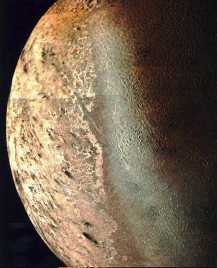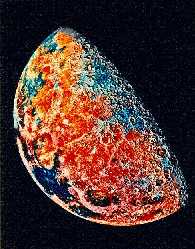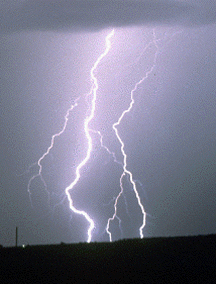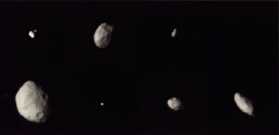This is a composite image of the small moons of Saturn.
Click on image for full size
NASA
The Capture Theory
Many of the moons surrounding other planets are really captured asteroids and not objects that
formed in place with the mother planet, or were
ejected by the mother planet.
One sign that a moon is really a captured asteroid is that it has a non-spherical shape, or looks more like a potato than round like our Moon. Moons that look like this are the two moons of Mars; Phobos and Deimos. Another sign that a moon may be captured is if it orbits in a direction opposite to that of the mother planet. An example of a moon of this kind is Neptune's moon Triton.
The Earth's Moon is both rounded in shape and orbits with Earth. These are the most direct pieces of evidence that the Moon is not a captured object. If the Moon were a captured object it would explain why the Moon and the Earth do not appear to be made of the same material.
You might also be interested in:

How did life evolve on Earth? The answer to this question can help us understand our past and prepare for our future. Although evolution provides credible and reliable answers, polls show that many people turn away from science, seeking other explanations with which they are more comfortable.
...more
Triton was discovered by W. Lassell in 1846. Of the 8 moons, it is the 2nd farthest from Neptune, with a standoff distance of 354,800 km. Triton may be one of the largest of the icy moons, is comparable
...more
Any successful theory must account for everything we know about the Moon now. Those things include the moon seems to be made of the same material as the Earth's upper mantle. the Moon has little or no
...more
Any successful theory must account for everything we know about the Moon now, as well as make predictions about future observations. There are three theories about how the moon came to be in place: that
...more
Although the Moon does not appear to have a magnetosphere surrounding it, it *is* a magnetic object in space. Scientists think that the magnetism of the Moon's surface is leftover from a time when the
...more
The atmosphere of the Moon may come from a couple of sources, one source is outgassing or the release of gases such as radon, which originate deep inside the Moon. Gases are released from the interior
...more
In decades past is was accepted that the Moon contained no water. Moon rocks collected by Apollo astronauts (at lunar equatorial regions) contained no traces of water. Lunar mapping performed by the Galileo
...more
Here's a safe and easy way to make lightning. You will need a cotton or wool blanket. This experiment works best on a dry, cool night. Turn out all the lights and let your eyes adjust to the darkness.
...more












